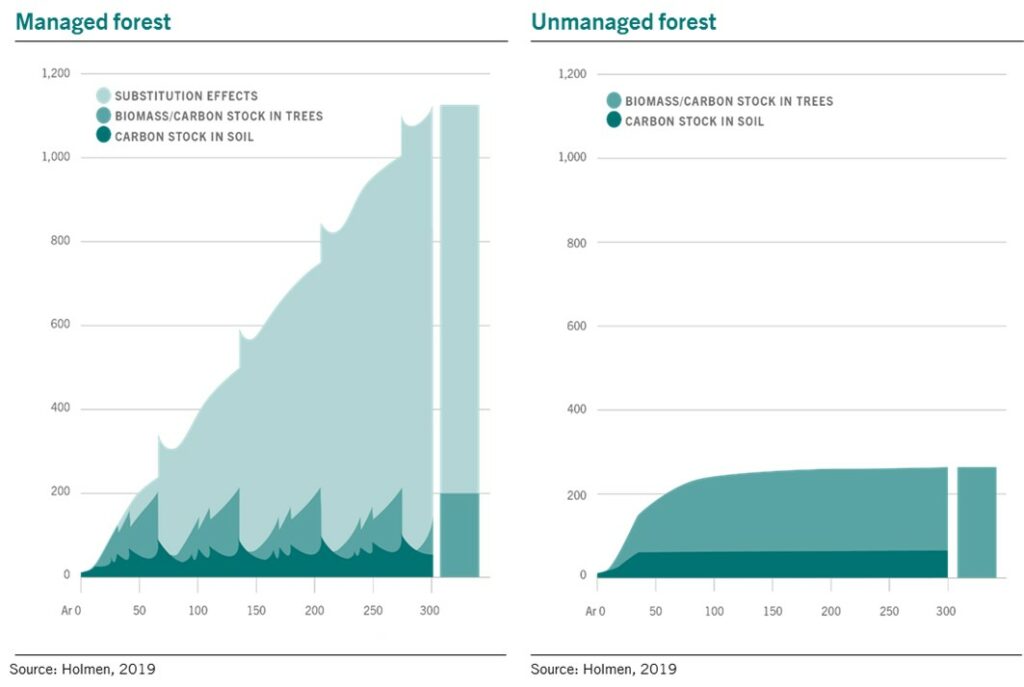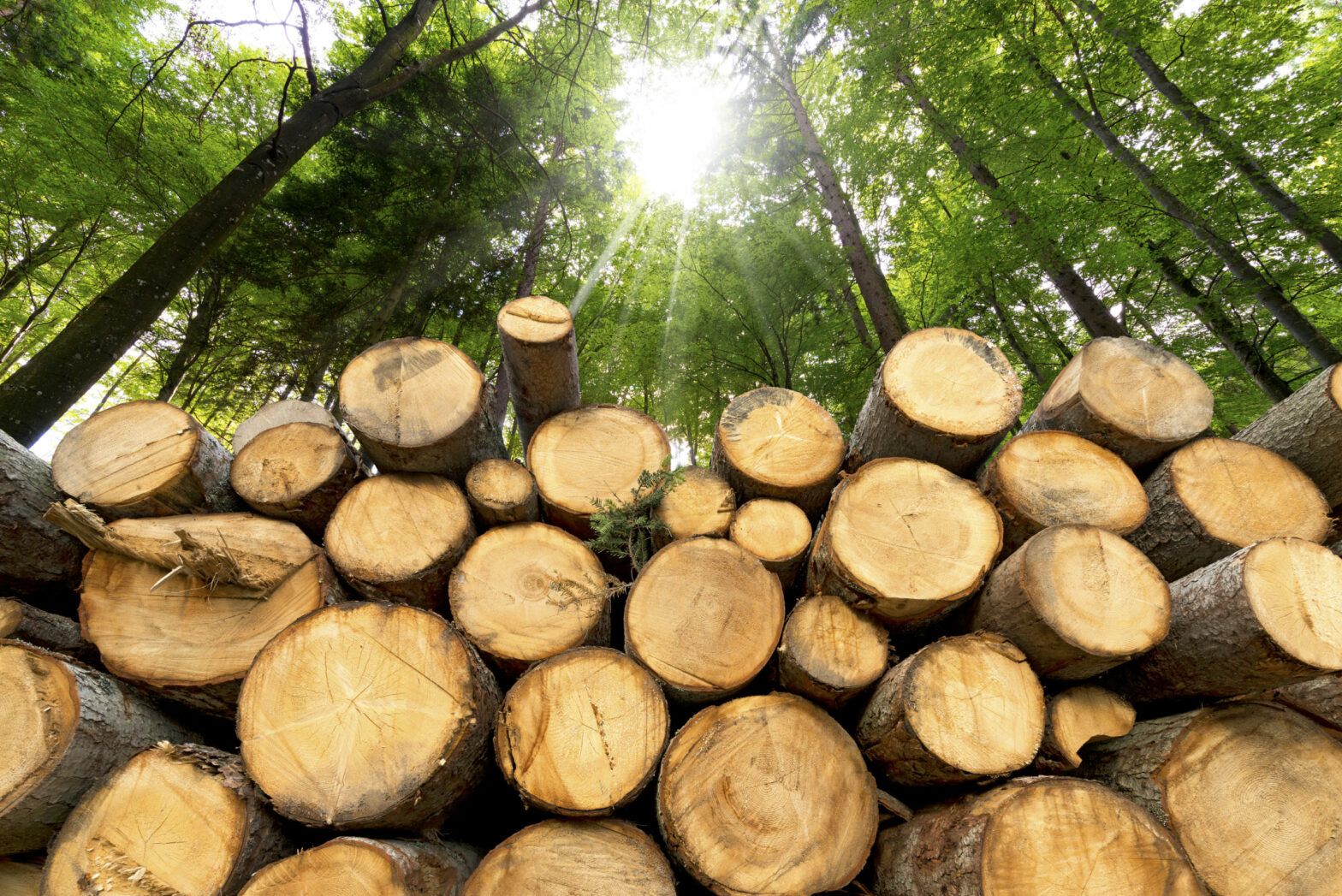Today’s confluence of consumer and government demands for plastic and fossil-based alternatives, more sustainable industry and lifestyles, with innovations able to cater to these demands, will ultimately benefit the sustainable forestry industry at the forefront of new biomaterials and chemicals while safeguarding nature’s carbon capture technology.
Sustainably managed forestland, or “timberland”, in itself is a valuable financial asset, that may be compared to an inflation hedged bond with a very long (eternal) duration.
Today, that income is based on the sale of logs and their transformation into lumber and other solid wood products for home construction, repair and remodelling; pulp, the input material for hygiene products, packaging and speciality papers, but also wood-based textiles, and plastic alternatives. Other forest-related revenue streams such as ecosystem services (biodiversity protection, soil and water protection etc.) might be increasingly monetised and add to timberland’s financial value.
Growing trees absorb CO2; drawing water from the ground they create, with the help of sunlight, molecules that make up their cell walls and their biomass. Trees are, by nature, perfect CO2 absorption machines. When a forest is sustainably managed – regularly harvested over time, and the extracted logs given a second life as useful end products – this carbon sink is optimised and the forest absorbs much more CO2 over cycles compared with an unmanaged forest, whose carbon storage capacity levels out at a certain point in time.
A timber-related company that owns forestland and industrial activities processing wood into wood-based end products can i) increase carbon capture by increasing forest growth rates ii) optimise industrial processes to minimise industrial CO2 emissions iii) produce wood based substitutes for traditional construction materials (where wood construction not only saves energy but also stores carbon for the entire life of a building), plastics, other fossil-based materials and fuels, helping to avoid fossil extraction and emissions. Wood products are thus a solution, in the context of climate change.
Forestry impact
The forestry industry is an existing example of the circular economy; in order to maximise profitability, all parts of the tree must be used in an economically sensible way. A fully grown tree in the Nordic hemisphere would first be sawn into parts that can be used for construction (lumber), and then the sawmilling residuals go into a multitude of other production facilities to end up as particle or fibre board, pulp, energy, or other end products, most of which are recycled.
Preliminary findings regarding the beneficial impact of the European forestry industry on total CO2 emissions in Europe suggest three major environmentally beneficial effects: i) the forest sink, i.e. absorption and storage of carbon through forest growth ii) almost compensating the industry’s own emissions (as the harvesting and processing of wood emits some CO2 emissions itself), wooden construction materials act as a sink of their own storing carbon over the lifetime of the building they are used to construct. iii) the substitution of alternative fossil based materials, an effect nearly as big as the forest sink. Analysis suggests the European forest industry products and activities, including the substitution effect, do offset 20% of the EU total emissions of CO2.
The forest industry has been very active in the development of new wood usage technologies so that almost anything made out of fossil-based materials today can be made out of a tree tomorrow. According to companies such as UPM, new wood-based biochemicals can be used seamlessly in existing value chains for various consumer products. The range of applications where these can be used as greener input materials is wide and growing rapidly thanks to innovation, e.g. textiles, PET bottles, packaging, pharma products, cosmetics, detergents, carbon fibre alternatives, renewable diesel fuels (that crucially do not compete with the human food chain as other food or feed-based biodiesels do). Existing companies in the forestry industry can act as platforms, bringing these concept businesses to market with the potential of eventual spinoffs. Unlike other industries, the major barrier of entry is not technology, but access to wood fibre.
Trends towards reducing CO2 emissions globally will result in increased usages of wood as a sustainable and renewable raw material that can reduce the usage of fossil based raw materials. This demand in growth for wood may translate into increased earnings and higher valuations of sustainably managed timberlands. A paradigm shift from fossil-based to more renewable resources for which the forest industry is well placed to capitalise on. Many companies have committed significant resources to explore and develop new products and while these are still a small percentage of sales, they are growing fast.









